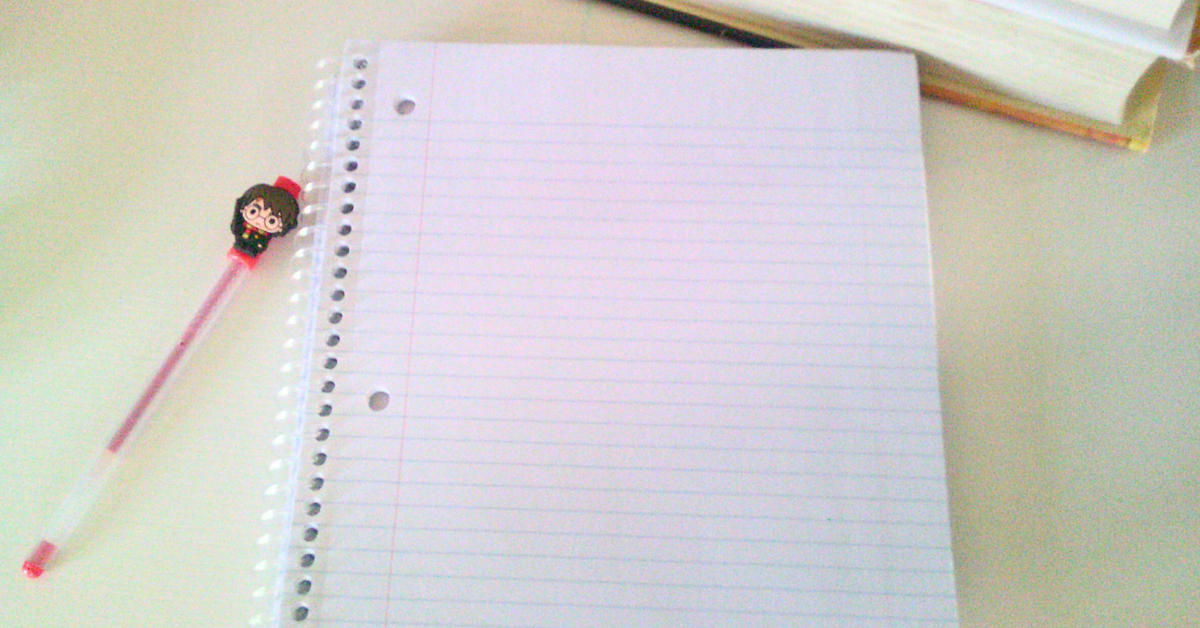Intro
All creatives—whether they’re a writer, an artist, or a musician—take inspiration from somewhere. And, a lot of the time—or, for me, most of the time—that inspiration comes from the work of other artists. Sometimes it’s a cool character that gets my gears turning, or an interesting plotline—it can be just about anything.
A lot of writers try to steer clear of consciously taking inspiration from other people’s work because they’re worried about copying. They even completely abandon stories that they feel have too many similarities with someone else’s, even if they’ve never even read or watched whatever the thing is, for the same reason. This has always seemed odd to me—not because I think it’s okay to flat out copy (you obviously don’t want to do that), but because, for me, taking inspiration from other people’s work and turning it into something completely my own is a normal part of my creative process.
So, today, I’m going to talk about how I do that, and hopefully clarify some of the differences between taking inspiration from something and copying something—something that is generally a lot more simple than a lot of aspiring writers seem to think.
Inspiration Vs. Copying
I’m going to tell you right now that copying is generally pretty hard to do unless you’re consciously trying to. If you know you don’t want to copy, you’re going to take steps to avoid it—whether you’re aware of it or not—and that’s usually enough to differentiate your work from whatever you’re worried about copying. So I wouldn’t stress too much about it, and I definitely wouldn’t let it hold me back from writing my story.
Copying is when you purposely write your story or character or whatever to be a clone of someone else’s. You add very few—if any—aspects that weren’t in whatever the original story was, or maybe you take out a few things that were in it; either way, there’s still little aside from names and visuals that differentiate the two. The setting and general story are both ultimately the same as the original. Basically, it’s all pretty obvious to anyone who pays attention.
Inspiration, on the other hand, often starts when you take something from someone else’s story and put your own spin on it. For example, maybe I want my main character to have a personality similar to Peter Parker’s, but he isn’t a superhero; my Peter-Parker-based character is a baker or something. I’m obviously not copying, because Peter isn’t a baker; I’m just taking some of his basic personality traits—traits that are far from exclusive to just him—and putting them into a completely different character. Someone who reads my story after it’s done might recognize that he’s similar to Peter Parker, but so are a zillion other characters that I’ve probably never even heard of; pretty much all of the characters we see in fiction have other characters who are personality-wise very similar to them, so this isn’t anything super remarkable. (So, if that’s a concern of yours, I wouldn’t sweat it.)
So, yeah, when you’re inspired by something, you typically don’t just take the whole thing and plop it into your story as is. You use aspects and ideas from it, and mix it with other ideas that ultimately transform it into something that might be similar, but is ultimately your own.
As you can probably guess, the lines between being inspired by something and copying something can often be a bit blurred but, as long as you’re actively putting your own spin on things, you shouldn’t worry too much about accidentally copying.
And you definitely shouldn’t worry about “copying” things that you’ve never even watched or read, but seem to have a similar concept to your own story. This is kind of bound to happen; realistically, the chances of you being the very first person to have the ideas you have are pretty low. I don’t believe that there are no new ideas, mind you, but I do think that a lot of people tend to have the same ideas—and that’s totally fine. Why? Because, if you give a hundred writers the same basic concept for a story, you’ll get a hundred different stories out of it. No two people will write a story the exact same way, even if they start with the exact same basic idea. That’s one of the great things about writing! Everyone has their own thoughts and experiences that will influence how they write something, and the only person with your particular thoughts and experiences is you. So the only person who can write the exact story you want to write is you. So, even if it has the same basic concept as some movie you just heard of last week, don’t let that stop you from writing it.
Character Inspiration
Characters are probably the things that I consciously use inspiration for the most. Some of my characters start out like my Peter Parker baker example from earlier, though there’s usually a lot more mixing and matching involved. Most of the time, I draw inspiration from multiple characters at once, taking certain traits from two or three and putting them together into a single new character.
Sometimes my characters do literally start out with, say, Iron-Man merged with Samwise Gamgee—a very weird combination, I know, but the random ones often seem to be the best ones—as the original concept, but I usually start a little less concrete. Most of the time, I just go “I want this character to be very over the top and full of themself, but also very loyal and kind-hearted.” That often makes me think of the characters that I like that have those qualities—in this case, Iron-Man and Samwise—and I start drawing inspiration from those characters, keeping them in mind when I’m writing my character.
In the end, my character might not seem very similar to Iron-Man or Samwise at all, which is totally fine—some people might even say that’s the best case scenario. Those two base characters have served their purpose in getting me started, and now my character has taken on a life and personality of their own. And, if I ever find myself getting stuck at some point—like, I don’t know how they’d react to a certain situation—I can always turn back to Iron-Man and Samwise for inspiration.
Another thing that I do sometimes is use other characters’ arcs as inspiration for my own, regardless of whether or not my character is similar personality-wise to whoever I’m basing their arc on. This is another thing where I tend to mix-and-match a lot, usually basing my character’s arc on the arcs of two or three other characters.
For example, maybe I know my character is going to be a loner with dangerous powers that they don’t know how to control—which could be the reason why they’re a loner—who stumbles upon a defenseless orphan and, because circumstances demand it, winds up taking them under their wing, even if they fear they may be a danger to their new charge. Immediately, this kind of sounds to me like a fusion of Din Djarin from The Mandalorian and Elsa from Frozen’s storylines, so I can use them as inspiration.
Worldbuilding Inspiration
Worldbuilding is another area where inspiration is very important to my process. As someone who writes primarily high fantasy, the worlds in my stories are often heavily inspired by the fantasy books, movies, and games that I like.
Just like with characters, I don’t want to just take a whole world and its lore, change the names, then dump my characters into it. I want to give it my own personal touch, to make it something only I can think up. Also like with characters, the easiest way to do this is to make it a mishmash of numerous fantasy worlds, mixed with whatever other ideas pop into my head.
Like, say I want to do a traditional fantasy world, with vibes similar to Middle-earth from Lord of the Rings. There are loads of fantasy worlds that are either based on or are similar to Middle-earth, such as Toril in the Dungeons and Dragons TTRPG, and Azeroth in the World of Warcraft MMORPG, which means there are lots of things that would mix easily. (I mention these three worlds because I use them as inspiration pretty excessively.) By combining ideas I got from these three, I can create a world that is similar, but not completely identical to any of the three.
Inspiration can be useful for a lot of aspects of worldbuilding. Lore, geography, and aesthetics are all things that inspiration has helped me with over the years. When I’m trying to come up with any of those things, I pretty much always bring my inspiration to mind, and it’s proven to be a pretty reliable strategy, often triggering ideas that I can build on and flesh out to make something that I like and that feels right.
Outro
Inspiration is vital to creativity, so it’s important to be able to find and use it effectively. Ideas don’t come out of nowhere so, the more inspiration you have floating around, the more likely you are to come up with something you’re excited about.
That’s all for today’s post. I hope you found this interesting, and that you’ll check back later this month for the next book recommendation post. Until then, thanks for reading!












